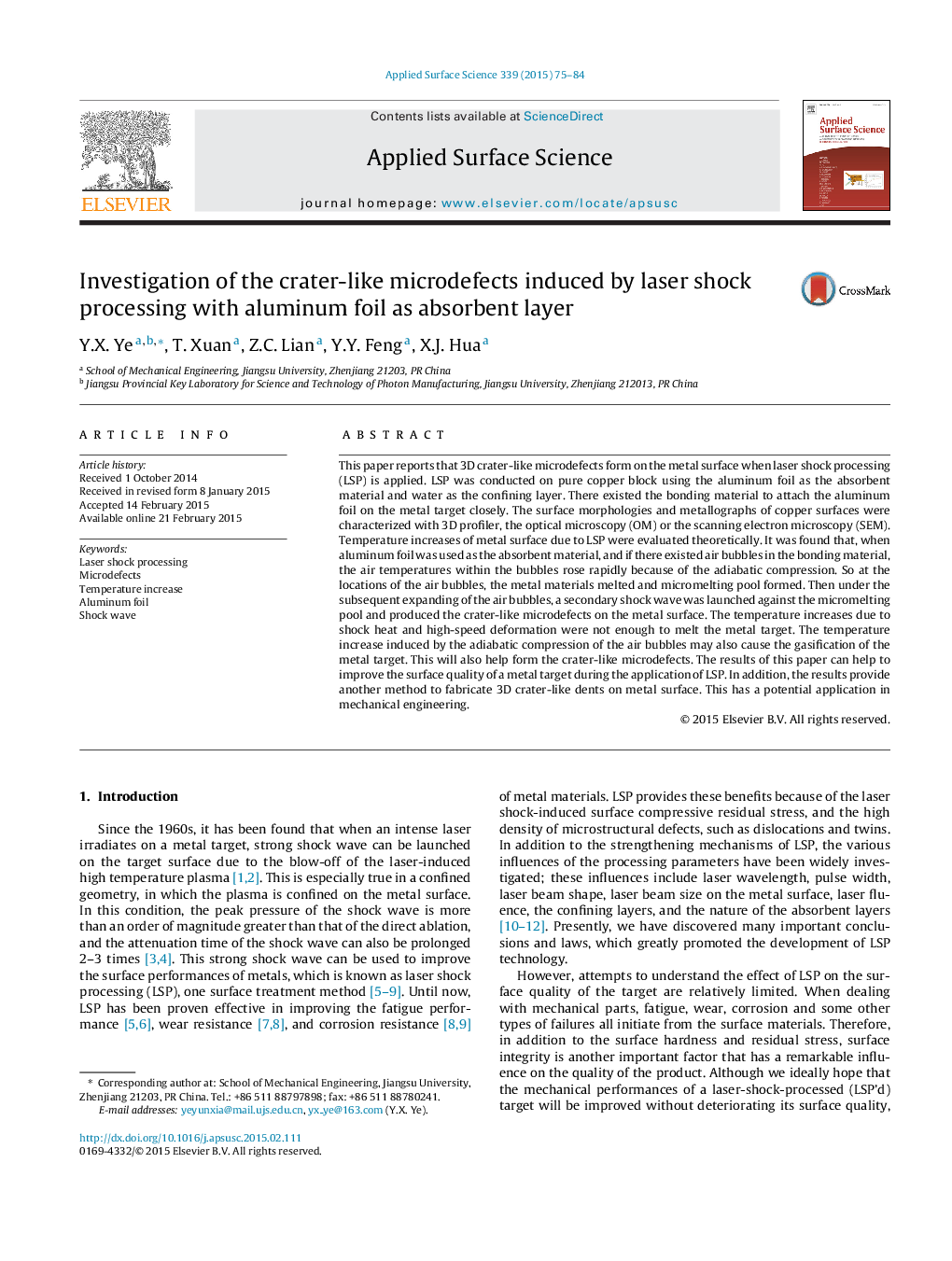| Article ID | Journal | Published Year | Pages | File Type |
|---|---|---|---|---|
| 5349824 | Applied Surface Science | 2015 | 10 Pages |
Abstract
This paper reports that 3D crater-like microdefects form on the metal surface when laser shock processing (LSP) is applied. LSP was conducted on pure copper block using the aluminum foil as the absorbent material and water as the confining layer. There existed the bonding material to attach the aluminum foil on the metal target closely. The surface morphologies and metallographs of copper surfaces were characterized with 3D profiler, the optical microscopy (OM) or the scanning electron microscopy (SEM). Temperature increases of metal surface due to LSP were evaluated theoretically. It was found that, when aluminum foil was used as the absorbent material, and if there existed air bubbles in the bonding material, the air temperatures within the bubbles rose rapidly because of the adiabatic compression. So at the locations of the air bubbles, the metal materials melted and micromelting pool formed. Then under the subsequent expanding of the air bubbles, a secondary shock wave was launched against the micromelting pool and produced the crater-like microdefects on the metal surface. The temperature increases due to shock heat and high-speed deformation were not enough to melt the metal target. The temperature increase induced by the adiabatic compression of the air bubbles may also cause the gasification of the metal target. This will also help form the crater-like microdefects. The results of this paper can help to improve the surface quality of a metal target during the application of LSP. In addition, the results provide another method to fabricate 3D crater-like dents on metal surface. This has a potential application in mechanical engineering.
Related Topics
Physical Sciences and Engineering
Chemistry
Physical and Theoretical Chemistry
Authors
Y.X. Ye, T. Xuan, Z.C. Lian, Y.Y. Feng, X.J. Hua,
